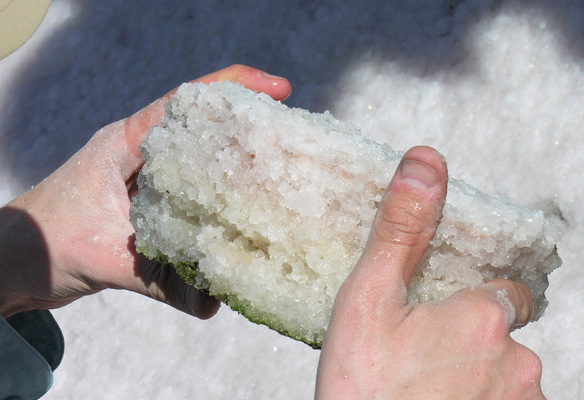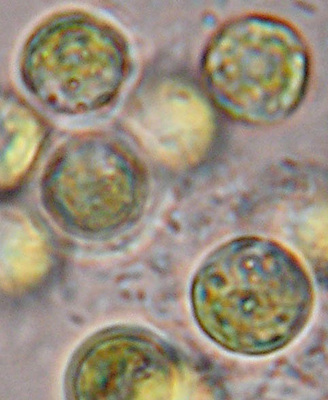
by Tim Lowenstein Thursday, January 5, 2012

Layered salt crystals, colored pink and green from trapped microorganisms. From a layered salt pan in Saline Valley, Calif. Michael Timofeeff

A microbial bloom of living, green _Dunaliella _algae found within a fluid inclusion in a salt crystal. Michael Timofeeff
Thousand- and million-year-old microbes found living in salt crystals: Could they also exist on other planets?
In 1993, “Jurassic Park” thrilled the world with the idea that dinosaurs could be resurrected from bits of DNA preserved in mosquitoes trapped in ancient amber. In the 18 years since the movie came out, scientists have been finding that parts of this scenario are closer to reality than anyone ever imagined.
In 2000, microbiologist Russell Vreeland of West Chester University in Pennsylvania and his colleagues found a 250-million-year-old bacterium — still alive — inside a tiny droplet of water in a salt crystal, they wrote in Nature. Although the find was controversial, further studies have found evidence of other microorganisms called archaea surviving tens of thousands, if not millions, of years in salt crystals. And just two years after the Vreeland study, Steven Fish, a microbiologist at the University of Leicester in England, and colleagues reported in Nature that they extracted DNA from bacteria and another type of microbe called haloarchaea from halite samples up to 425 million years old.
The discovery of ancient life trapped in salt raises many exciting questions: Could these hibernating microbes be brought back to active life today? If so, what might they tell us about ancient life on Earth? And do they hold the secrets to finding life in outer space?
© 2008-2021. All rights reserved. Any copying, redistribution or retransmission of any of the contents of this service without the expressed written permission of the American Geosciences Institute is expressly prohibited. Click here for all copyright requests.